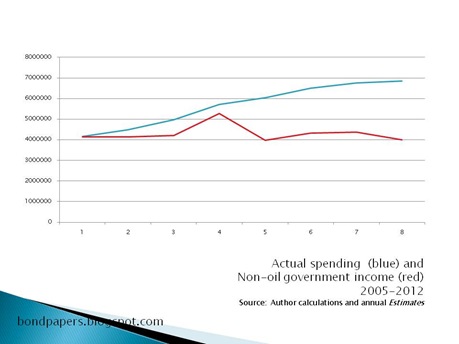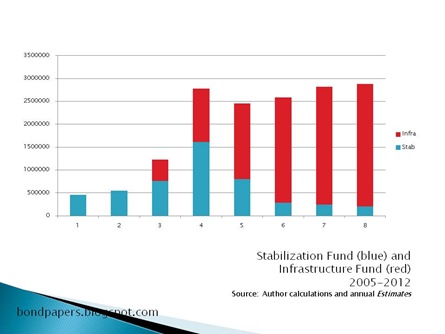You don’t need drugs or alcohol to get the feeling of dizziness or stupor like you smacked your head with a hammer. Hard. Repeatedly.
Just listen to a representative of one of the special interest groups talking about the provincial budget and public spending. It doesn’t matter which one. As your humble e-scribbler was finishing off this post on Tuesday, a representative of the appropriately named St. John’s BOT was on television talking about how government had to cut public sector jobs and tear into public sector pension benefits because of the hideous unfunded pension liability.
Corporate lawyer Denis Mahoney even quoted the distorted, misleading government claim about the unfunded liability as a share of only a fraction of the public debt to bolster his position. He never mentioned the billions going to subsidize his members, of course.
In the process, Mahoney looked about as convincing as the labour mouthpieces like the Canadian Centre for Policy Alternatives who said in 2004 that the government wasn’t spending too much. It just didn’t have enough money. Of course, they never mentioned that the government was outspending just about every other province on a per capita basis.
Listen to this sort of mindless crap long enough and you don’t have to wonder why people wander around in a daze.
To clear your head, take a look at a chart showing the actual government spending from 2005 to 2012 (in blue) compared to the income from sources other than oil and minerals (in red).
The gap between the blue line and the red line is basically the definition of unsustainable. The provincial government is spending one-time oil cash to cover that gap. The numbers came from the annual budgets from 2005 to 2012.
The small cuts to spending and the slice into the public sector labour force that the Board of Trade is cheering just got ploughed back into more spending so the problem isn’t solved. It continues.
Mahoney’s cheering looks stupid.
And it is stupid.
Just as it is stupid for him to claim that the private sector economy is booming and therefore he and his members don’t need government spending. If that was true then the red line in the chart wouldn’t be flat. We’d expect to see an increase proportionate to the boom, even allowing for some tax cuts over the past decade.
The fact we don’t see growth in that red line shows us just how much the loss of a bunch of paper making machines and the 2008 recession had on Newfoundland and Labrador.
The SIDI Model
Consider this one of the added benefits of the SIDI approach to public sector spending that SRBP introduced on Tuesday. You can’t avoid seeing what is actually going on in the economy and in government taxation when you separate non-renewable resource income from all the rest of it.
SIDI relies primarily on those other sources of income – the non-oil ones – to cover the cost of delivering government services. The non-renewable resource revenues get split into two basic groups: spending and income-generation. The first spending pot – the Sustainability Fund is used to cover any gaps between spending that grows at a regular pace each year and available income. The Infrastructure Fund covers capital works spending. Two other pots – the income generators - cover debt reduction and investment income.
For this post, we’ll focus on some details of the two spending funds.
Smoothing out the Volatility
The Sustainability Fund is based on an idea contained both in David Norris’ paper for the Vic Young royal Commission a decade ago and a more recent paper from the C.D. Howe Institute on Alberta’s exposure to income volatility. Banking a portion of annual revenues allows it to be used later on, as needed. In the SIDI model, we divided annual oil and mining royalties equally among four funds. The Sustainability Fund would be used to pay for current account spending including the four percent annual increases allowed in this scenario.
The Infrastructure Fund was used in this model to provide funds for an annual capital works program of $500 million. That is roughly double the average annual capital works spending by the provincial government in the 1990s.
Here’s what the annual budgets would look like, compared to the actual spending under the Conservatives.
Pros
This approach offers several significant advantages. It provides predictable, affordable public spending with guaranteed increases at or above the rate of inflation regardless of short-term changes in the non-oil economy.
The increases would not produce the sort of enhanced inflationary effects caused by massive increases in provincial government spending in recent years. These are counterproductive since they drive up government costs and can hinder private sector investment.
In application to the test period using actual revenues for the provincial government, the basic SIDI policies produced some interesting effects. The Sustainability Fund was actually able to cover current account as well as capital account spending of $500 million annually until 2011. At that point, covering the gap between non-oil income and spending necessitated drawing down $500 million annually for 2011 and 2012 from the Infrastructure Fund.
That points to an important reality: even using disciplined spending, the weak revenue generation in the non-oil economy after 2008 meant that the model could only balance the budget by drawing down more and more oil revenue. The gap in 2012 was $1.8 billion.
The calculations did not include any income from the debt reduction and investment funds. Even including those potential revenues, the gap in 2012 would have been about $1.5 billion. For all that, though, the 2012 Sustainability Fund contained $204 million at the end of the budget cycle while the Infrastructure Fund stood at $2.67 billion.
Cons
The single greatest challenge posed by the SIDI approach is that it requires political discipline of the kind seldom seen among politicians in Newfoundland and Labrador. The pressures from interest groups addicted to government spending is enormous. That addiction is just as strong among the business community as it is any other group.
The large cash reserves – even just the $2.67 billion left in the Infrastructure Fund in 2012 – would pose an enormous temptation to the sort of ego-centric politicians the province generates. That combination is essentially what created and sustains the current crisis. The evil twins would pose a continuing challenge to any government trying to manage public money responsibly.
The Equalization Offsets
A reader asked how the SIDI approach accounted for the loss of federal Equalization transfers. This is an issue the current provincial government has held out repeatedly as being responsible for the ongoing deficit problem.
The simple answer is that the transfers are invisible as far as this approach is concerned. All income from non-renewable resources was treated equally. The SIDI approach allowed for the use of the offsets exactly as they were intended: as transitional assistance. In practice, the commitment to balanced budgets allowed for surpluses in 2005 and 2006 that went into the Sustainability Fund. Once non-renewable revenues crossed the arbitrary $500 million annual trigger, the project was cash-ahead.
The other part of the answer is that essentially there never was a loss of income. The provincial government income is whatever the amount is. Each cabinet is responsible for delivering necessary public services with the resources at hand. In this instance, the provincial government knew well in advance that the Equalization payments and the offsets would end. There is no excuse for developing sustained spending demand on the basis of money that one knows will vanish. The provincial government has been using the end of Equalization transfers as a political excuse for its own systematic overspending.
Other Issues
By contrast, the SIDI model allows for sustained increases in spending using the considerable resources the provincial government actually had available. Implicitly, the SIDI model imposes a discipline on government that would force managers to be creative and efficient in service delivery and spending. The model acknowledges the risks to sustainability that non-renewable commodity revenues pose to any country or state and instead creates an environment in which governments must perform like non-resource countries. This is part of the resource curse.
Implicitly, the model also works against rentierism by making public spending as transparent as possible. The annual Estimates represent a report an the government’s Consolidated Revenue Fund. As the name implies, it brings all revenue under one heading. SIDI would require individual performance reports on each of the funds. As such, the reports would allow the public to track annual government income and spending in a simple, understandable way.
The amount of money in the Infrastructure Fund could allow any government to develop a special public works spending program beyond the usual approach. The annual budget could contain more modest spending on the minor capital acquisitions such as furniture and equipment that are funded in the budget alongside new schools and hospitals.
One way to increase transparency would be to approve major public works under a new legal framework using the money in the Infrastructure Fund. These projects could be managed by a new Crown agency comprising appointed officials, subordinate to cabinet. This approach would replace the old-fashioned pork barrelling and patronage of the past decade with a transparent system of construction based established, objective criteria. It would also limit the potential for political corruption of the sort seen recently in Quebec.
This might prove difficult given that politicians in this province have grown accustomed to operating as they did a century ago. In practice, though, the political benefit of delivering such major public works would remain the same while the internal fighting of the sort seen before Tom Rideout’s resignation would diminish significantly.
Thus far we have covered an alternative way to spend slightly more that half the $15.6 billion in non-renewable resource revenues the provincial government has spent since 2005. On Thursday we’ll look at how the other half of the money could have been used to make more money for the people of Newfoundland and Labrador.
-srbp-

